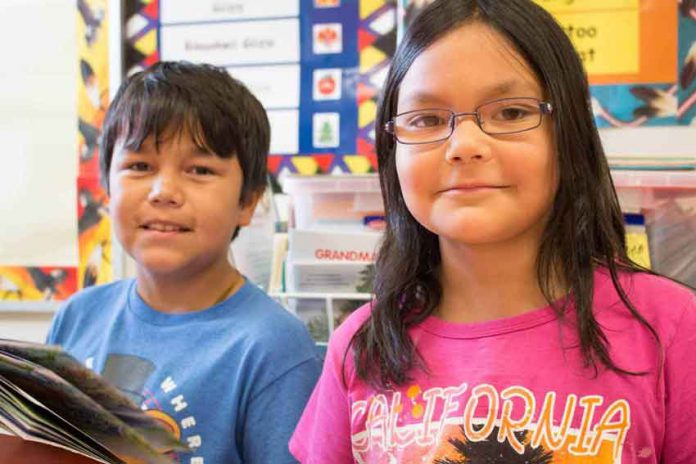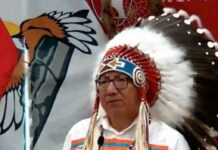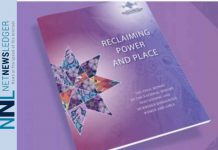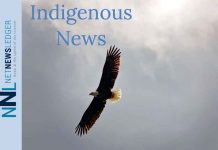UNCEDED ALGONQUIN TERRITORY, OTTAWA – “Every First Nations child deserves the best start in life with a high quality and culturally relevant education that meets their needs. Today’s announcement of a new, co-developed policy and funding approach for on-reserve education replaces an outdated system and ensures predictability. This new approach will allow First Nations to be in the driver’s seat – ensuring that they are in control of First Nations education,” says Seamus O’Regan, P.C., M.P. Minister of Indigenous Services.
This new approach takes effect April 1, 2019, supports First Nations control of First Nations education, and ensures more predictable and sufficient funding.
“Today we are another step closer to the long-standing goal of First Nations control of First Nations education. This new approach means First Nations have the ability to implement their own models of education. It means a shift from proposal-based funding toward predictable and sustained funding so First Nations can plan and build quality education systems that reflect their needs and their vision of holistic, lifelong learning. This is a significant step toward closing the gap in education outcomes for First Nations children and students,” adds National Chief Perry Bellegarde, Assembly of First Nations.
First Nations students on-reserve deserve a high-quality education with financial investments that meet their unique needs, including supports for language and culture to ensure they get the best start in life.
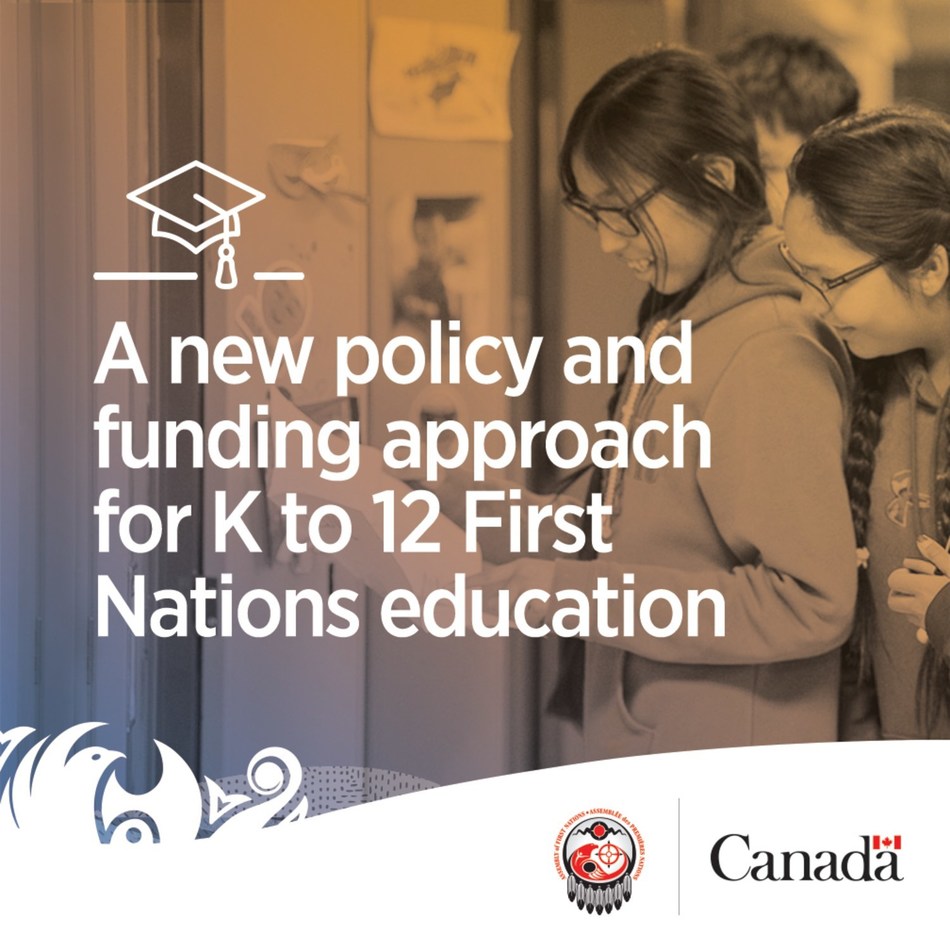
Seamus O’Regan, Minister of Indigenous Services, and National Chief Perry Bellegarde of the Assembly of First Nations (AFN) have announced a new co-developed policy and improved funding approach that will better support the needs of First Nations students on-reserve.
“Lifelong learning and a greater quality of life starts with quality education. This new approach is an important step toward First Nations taking greater control of planning and delivering education based on real need. Fair and sustained funding for First Nations children and students, including languages and cultures, will lead to better outcomes for everyone. This is a strong step, but there is a lot more to do to create equity in First Nations education and communities. As the largest growing demographic in the country, investing in First Nations students and young people is investing in Canada’s future,” states Ontario Regional Chief RoseAnne Archibald, Assembly of First Nations, Portfolio Lead on Education.
As of April 1, 2019, the new funding approach will:
- replace outdated proposal-based programs with improved access to predictable core funding;
- ensure base funding is comparable to provincial systems across the country while working towards additional funding agreements based on need to better account for factors such as remoteness, school size, language, and socio-economic conditions;
- provide First Nations schools with $1,500 per student, per year, to support language and culture programming;
- provide new resources which will support full-time kindergarten in every First Nations school for children aged four and five; and
- ensure special education funding is more predictable, with fewer application-based requirements.
Following extensive engagements in 2016 and 2017, this new co-developed funding approach to K-12 education responds to First Nations advocacy to better meet the needs of students, improve education outcomes and strengthen First Nations control of First Nations education.
Indigenous Services Canada is currently working with First Nations across the country to implement the new formula-based regional funding models and will be publishing more detailed information on the Government of Canada’s website in the coming months.
Ultimately, this new approach is an important step toward the creation of new Treaty-based, regional and/or local education agreements that put First Nations in control of First Nations education, and will better meet the needs of students.
Quick Facts
- Budget 2016 included an additional $2.6 billion over five years for elementary and secondary education. Since then, total funding for education on-reserve has increased by more than 30%, and will continue to increase through 2020-2021.
- The new formula-based core funding model for elementary and secondary education will be data-driven and responsive to student population growth and education cost pressures.
- The new formula-based funding methodology will be more understandable for recipients and informed by ongoing technical discussions.
- With the new approach, two proposal-based funding streams, representing $360 million, will be rolled into core funding, reducing the administrative burden.
Backgrounder – New Funding and Policy Approach for First Nations Kindergarten to Grade 12 Education
From: Indigenous Services Canada
On January 21, 2019, the Honourable Seamus O’Regan, Minister of Indigenous Services, and National Chief Perry Bellegarde of the Assembly of First Nations (AFN), announced a new, co-developed policy and funding approach that will better support the needs of First Nations students on-reserve.
First Nations Control of First Nations Education
This new approach is a starting point to better meeting the unique needs of First Nations students and improving outcomes. It will also further strengthen First Nations efforts to ensure high quality and culturally appropriate education systems for their students.
Engagement process
This co-developed approach is the result of an extensive engagement process undertaken in 2016 and 2017 with representatives from Indigenous Services Canada, the Assembly of First Nations, the National Indian Education Council and the Chiefs Committee on Education. The engagement process included community-level discussions, an online survey, technical task teams, leadership dialogues and regional technical discussions.
A new co-developed approach
Beginning in April 1, 2019, Indigenous Services Canada will implement a series of new formula-based regional funding models for elementary and secondary education, replacing a number of proposal-based programs. This new funding approach will significantly reduce the administrative and reporting burden on First Nations schools, communities and organizations.
Each regional model is aimed at ensuring that students attending First Nations schools are supported by predictable base funding that is directly comparable to what students enrolled in provincial education systems receive. On top of this base funding, Indigenous Services Canada will be providing expanded supports for full-time kindergarten and increased language and culture programming at on-reserve schools.
Indigenous Services Canada will work with First Nations to further refine formula-based regional funding models that will better address the unique needs of First Nations students. This will include annual updates to account for student population growth and other education cost changes. It will also include collaborative work with First Nations to support the creation of new Treaty-based, regional and/or local education agreements that respond to the education goals and priorities set by First Nations.
The new funding approach will:
- replace outdated proposal-based programs with improved access to predictable core funding;
- ensure base funding is comparable to provincial systems across the country while working towards additional funding agreements based on need to better account for factors such as remoteness, school size, language, and socio-economic conditions;
- provide First Nations schools with $1,500 per student, per year, to support language and culture programming;
- provide new resources which will support full-time kindergarten in every First Nations school for children aged four and five;
- ensure special education funding is more predictable, with fewer application-based requirements;
- support ongoing discussions with First Nations across Canada to further refine the new formula-based regional funding models in order to better address the unique needs of First Nations students, and;
- enable new Treaty-based, regional or and/local education agreements that respond to the education goals and priorities set by First Nations.
Regional and/or local education agreements
Indigenous Services Canada will work in partnership with First Nations to develop additional Treaty-based, regional and/or local education agreements that respond to the education goals and priorities set by First Nations. These will be co-developed at a regional level through discussion tables. These agreements will vary from region to region and will:
- be comprehensive and cover all federal support for First Nations elementary and secondary education, including special education;
- establish clear roles and responsibilities for First Nations-led service delivery; and
- co-develop mutual accountability mechanisms.
The new funding and policy approach announced today and taking effect on April 1, 2019 will act as an interim measure as these regional and/or local education agreements are developed and implemented.
Improving Education Infrastructure
In addition to the $2.6 billion that Budget 2016 provided for elementary and secondary education on-reserve, $969.4 million over five years was provided for First Nations education infrastructure. Together with previous budget commitments, approximately $1.47 billion has been committed to supporting First Nations education infrastructure.
These investments have supported:
- 70 new school construction projects completed or underway since April 2016;
- 103 additional projects, including 87 renovations and upgrading projects, seven feasibility studies and nine supporting projects;
- Overall, 173 school-related infrastructure projects benefitting over 41,000 students in 225 communities.
- Examples include:
- Southeast Collegiate in Winnipeg
- Manitoba Schools Initiative: Construction to begin in spring 2019 on four new schools and a major renovation in four First Nation communities in Northern Manitoba
- New kindergarten-grade 12 school in Lake St. Martin: The Government of Canada and Lake St. Martin First Nation are working together to ensure that residents displaced by severe flooding in 2011 return to a community that will meet their needs for generations to come. This new school will accommodate up to 324 students.
Facts & Figures
- The federal government provides funding to First Nations to support approximately 107,000 eligible students who are 4 to 21 years of age, ordinarily live on-reserve, and who are enrolled in and attending an eligible elementary or secondary program.
- Budget 2016 announced historic investments in First Nations elementary and secondary education starting in 2016-17. In 2016-17 and 2017-18, the Government of Canada invested more than $3.6 billion in elementary and secondary education on-reserve.
- Since 2016, federal funding per year for education on-reserve has increased by more than 30%.
- The new funding approach announced today was co-developed with First Nations to fix an outdated funding structure.
- The new funding approach will be implemented April 1, 2019, and will replace proposal-based funding with more predictable, base funding that is directly comparable to what students enrolled in provincial education systems receive.
- Other funding that will continue to be available outside the new formula includes:
- A component of the High-Cost Special Education Program
- Innovation and Research Programming
- The Education Partnerships Program
- Regional education agreements will vary from region to region but will include improved results frameworks and mutual accountability mechanisms that reflect First Nations’ needs and priorities.
- Indigenous Services Canada is already working with interested First Nations in developing regional education agreements and will be announcing the first concluded agreement very soon.
Associated Links

